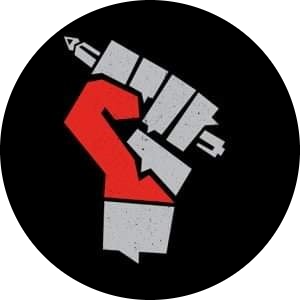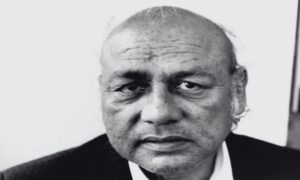The Pakistani Aurat is in feist to get what she wants, ready to step out of the safety of her house and join her female-counterparts in seemingly endless conversations and efforts over what the new season will bring. This is the mood that rightfully marks the beginning of a Pakistani Spring. It’s not just to acquire a new lawn outfit – although that’s what high-consumption inducing corporations would have you believe about their ‘one-dimensional’ women audience that only care about shopping and looking good. In grave reality, more and more Pakistani women and their supporting advocates, at the threat of constantly being checked for their Pakistani authenticity, are gearing up for the not very trendy quest for revolution – the Aurat Azaadi March.
What is the Point of a March?
A pivotal part of the organized Pakistani feminist movement is the annual ‘Aurat March’, which facilitates the process of demanding the social, political and economic uplifting of women, transgender persons and other vulnerable segments of society such as the economically poor, physically handicapped, and socially stigmatised, to local and national-level government institutions as well as the public. In a deeply patriarchal country where multiple private and public issues are the results of a misogynistic understanding of gender roles (at the hands of which men have also suffered), the feminist struggle would be existentially and strategically disadvantaged if not demonstrated on the ‘women unfriendly streets of a conservative nation.
Like any impactful political movement, the organization of nation-wide physical demonstrations helps to bring together a diverse set of people and allyship of activists from many parts of Pakistan. Speaking of diversity, #AuratAzaadi penetrates the national political landscape beyond the digital space and into the physical realm, opening itself up to the wider population’s participation and mobilisation not found on social media platforms, especially the digitally illiterate and members of low-income and even conservative groups.
The quest for gender justice in Pakistan is gradually breaking the ‘digital divide’ and class, caste, ethnic and religious barriers towards stronger and democratic feminist solidarity, allyship, and collective activism. Rightfully so, each annual progression’s agenda and demands are including and representing a plethora of gender-centric issues of Pakistanis found at the margins of state and society. This year, the main demands are for fair and indiscriminate access to healthcare, especially for women in poverty and disabled persons and fairer economic policies that limit IMF debt-financing and ensure the working class’s livelihoods. The movement and its marching advocates also extend solidarity to the ongoing struggle of Baloch women seeking justice and an end to enforced disappearances in the provincial region.
Marching is Revolutionary
In a country where the majority understanding of a woman’s role is to primarily be confined to the ‘chaar divari’ of her house, the possibility and realization of a group of politically engaged women taking up space on the streets are no short than an act of revolution. In a society where women feel unsafe in public places, the Aurat March has enabled women to reclaim (and some claim for the first time!) these physical spaces, exercise freedom of movement and demand their rights. Unfortunately, many cannot physically join the demonstrations, whether they are supporters or the victimized women for whom the struggle is dedicated to. The very act of extending female comradeship towards socially and economically disempowered women by empowered and mostly urban women, who are organizing and attending these marches, is a significant act of rebellion in a country with immense classism casteism, among other dividing prejudices.
Another threatening challenge to the status quo is the coming together of politically engaged citizens under the fight for Pakistani gender justice. Being aware of one’s rights, exercising those rights, thinking critically about the lack of civilian freedoms and demanding formation and reformation of those very freedoms is revolutionary in the face of systems that benefit from the silence of apathetic or repressed citizens, or both. The Aurat Azaadi March is then no way short of an effort to prepare and empower a generation of Pakistani women, potentially half of the entire population, to organize and challenge power in the country’s political landscape to reach democratic outcomes!
The Long March
While the past and present of Pakistani feminism can be lauded and analysed for its significance, strategy, usefulness and impact on achieving gender justice for women, men, transgender persons and other vulnerable groups due to shaking patriarchal systems and practices – revolutionary outcomes must also be measured elsewhere.
While the marchers for Aurat Azaadi reclaim public spaces to fight the patriarchy, Pakistani society, institutions, and the ‘change-makers’ between them must take responsibility to challenge patriarchal reasoning and practices. The latter has made communities intolerant, lands inhospitable, economies that breed inequality and poverty, and governance that is dismissive of the most vulnerable. True and transformative gender justice can only be achieved when we not only reclaim and secure our streets and neighbourhoods, but our cities, rural spaces, public services, courts of law, centres of business, sources of information like the media, and our minds with education – from the tight grips of patriarchy. For this, the March will have to be bigger, bolder and braver!
This article was written by Maryam Mirza. To write for The Students Herald contact: writetostudentsherald@gmail.com
The Students’ Herald News Desk focuses on reporting the latest news regarding student politics and campus updates to you.
The News Desk can be reached at admin@thestudentsherald.com




